
Phyllis Virginia "Bebe" Daniels was an American actress, singer, dancer, writer, and producer.

Babes in Toyland is a Laurel and Hardy musical Christmas film released on November 30, 1934. The film is also known by the alternative titles Laurel and Hardy in Toyland, Revenge Is Sweet, and March of the Wooden Soldiers, a 73-minute abridged version.

Girl Crazy is a 1930 musical by George Gershwin with lyrics by Ira Gershwin and book by Guy Bolton and John McGowan. Ethel Merman made her stage debut in the first production and co-lead Ginger Rogers became an overnight star. Rich in song, it follows the story of Danny Churchill who has been sent to fictional Custerville, Arizona, to manage his family's ranch. His father wants him there to focus on matters more serious than alcohol and women but Danny turns the place into a dude ranch, importing showgirls from Broadway and hiring Kate Forthergill as entertainer. Visitors come from both coasts and Danny falls in love with the local postmistress, Molly Gray.
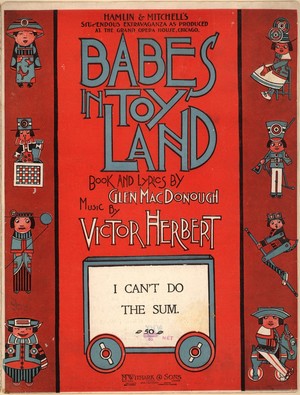
Babes in Toyland is an operetta composed by Victor Herbert with a libretto by Glen MacDonough, which wove together various characters from Mother Goose nursery rhymes into a musical extravaganza. Following the extraordinary success of their stage musical The Wizard of Oz, which was produced in New York beginning in January 1903, producer Fred R. Hamlin and director Julian Mitchell hoped to create more family musicals. MacDonough had helped Mitchell with revisions to the Oz libretto by L. Frank Baum. Mitchell and MacDonough persuaded Victor Herbert to join the production. Babes in Toyland features some of Herbert's most famous songs – among them "Toyland", "March of the Toys", "Go to Sleep, Slumber Deep", and "I Can't Do the Sum". The theme song "Toyland", and the most famous instrumental piece from the operetta, "March of the Toys", occasionally show up on Christmas compilations.

King of Jazz is a 1930 American pre-Code color musical film starring Paul Whiteman and his orchestra. The film title refers to Whiteman's popular cultural appellation. At the time the film was made, "jazz", to the general public, meant jazz-influenced syncopated dance music heard on phonograph records, on radio broadcasts, and in dance halls. In the 1920s Whiteman signed and featured white jazz musicians including Joe Venuti and Eddie Lang, Bix Beiderbecke, Frank Trumbauer, and others.

Wheeler & Woolsey were an American vaudeville comedy double act who performed together in comedy films from the late 1920s. The team comprised Bert Wheeler (1895–1968) of New Jersey and Robert Woolsey (1888–1938) of Illinois.

Flying Down to Rio is a 1933 American pre-Code RKO musical film famous for being the first screen pairing of Fred Astaire and Ginger Rogers, although lead actors Dolores del Río and Gene Raymond received top billing. Among the featured players are Franklin Pangborn and Eric Blore. The songs in the film were written by Vincent Youmans (music), Gus Kahn and Edward Eliscu (lyrics), with musical direction and additional music by Max Steiner. During the 7th Academy Awards, the film was nominated for the new category of Best Original Song for "Carioca", but it lost to "The Continental" from The Gay Divorcee, the next Astaire and Rogers film.
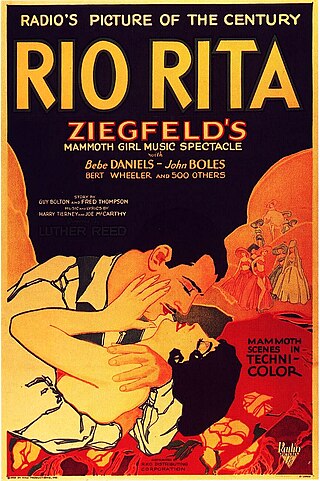
Rio Rita is a 1929 American pre-Code RKO musical comedy starring Bebe Daniels and John Boles along with the comedy team of Wheeler & Woolsey. The film is based on the 1927 stage musical produced by Florenz Ziegfeld, which originally united Wheeler and Woolsey as a team and made them famous. The film was the biggest and most expensive RKO production of 1929 as well as the studio's biggest box office hit until King Kong (1933). Its finale was photographed in two-color Technicolor. Rio Rita was chosen as one of the 10 best films of 1929 by Film Daily.

John Boles was an American singer and actor best known for playing Victor Moritz in the 1931 film Frankenstein.

Rio Rita is a 1927 stage musical with a book by Guy Bolton and Fred Thompson, music by Harry Tierney, lyrics by Joseph McCarthy, and produced by Florenz Ziegfeld. This musical united Bert Wheeler and Robert Woolsey as a comedy team and made them famous.
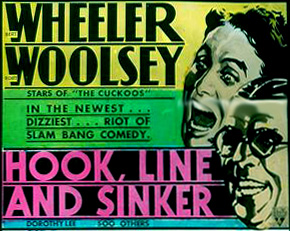
Hook, Line and Sinker is a 1930 American pre-Code slapstick comedy directed by Edward F. Cline from a screenplay by Ralph Spence and Tim Whelan. It was the third starring vehicle for the comedy team of Wheeler & Woolsey, and also featured Dorothy Lee. It would be one of the largest financial successes for RKO Pictures in 1930.

Dorothy Lee was an American actress and comedian during the 1930s. She appeared in 28 films, usually appearing alongside the comedy team of Bert Wheeler and Robert Woolsey.

Half Shot at Sunrise is a 1930 American pre-Code comedy film starring the comedy duo Wheeler & Woolsey and Dorothy Lee. Their fourth film together, it was the second starring vehicle for the two, following the success of The Cuckoos, which had been released earlier in 1930. Directed by Paul Sloane, from a screenplay by Anne Caldwell, James Ashmore Creelman, Ralph Spence, and Fatty Arbuckle, which had been tailored to highlight the comedic talents of Wheeler and Woolsey. In 1958, the film entered the public domain in the United States because the claimants did not renew its copyright registration in the 28th year after publication.
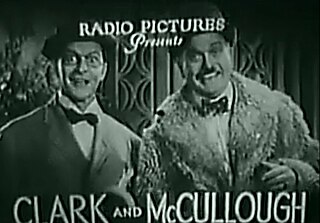
Robert Edwin Clark, known as Bobby Clark, was an American minstrel, vaudevillian, performer on stage, film, television and the circus. Known for his painted-on eyeglasses, he was part of a comedy team with Paul McCullough for 36 years.

Paul Johnston McCullough was an American actor and comedian who was one half of the comedy duo Clark and McCullough, along with fellow comedian Bobby Clark.

Hit the Deck is a 1930 American pre-Code musical film directed by Luther Reed and starring Jack Oakie and Polly Walker, with Technicolor sequences. It was based on the 1927 musical Hit the Deck, which was itself based on the 1922 play Shore Leave by Hubert Osborne. It was one of the most expensive productions of RKO Radio Pictures up to that time, and one of the most expensive productions of 1930. This version faithfully reproduced the stage version of the musical.

The Cuckoos is a 1930 American Pre-Code musical comedy film released by RKO Radio Pictures and partially filmed in two-strip Technicolor. Directed by Paul Sloane, the screenplay was adapted by Cyrus Wood from the 1926 Broadway musical The Ramblers by Guy Bolton, Bert Kalmar and Harry Ruby. The film stars Bert Wheeler and Robert Woolsey, and while they had appeared on Broadway and in other films together, this was their first time starring as a team. The success of this picture, combined with Rio Rita being their most successful film of 1929, convinced the studio to headline them as the comedy team Wheeler & Woolsey, through 1937.
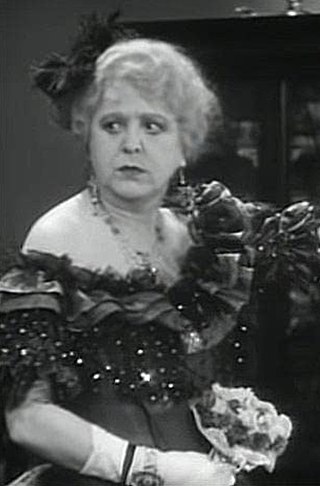
Jobyna Howland was an American stage and screen actress.

Joseph Bridger Cawthorn was an American stage and film comic actor.

Everett Marshall was an American singer and actor who performed at the Metropolitan Opera, in Broadway revues, and in early musical films.




















